 Technology
Technology  Technology
Technology  Humans
Humans 10 Everyday Human Behaviors That Are Actually Survival Instincts
 Animals
Animals 10 Animals That Humiliated and Harmed Historical Leaders
 History
History 10 Most Influential Protests in Modern History
 Creepy
Creepy 10 More Representations of Death from Myth, Legend, and Folktale
 Technology
Technology 10 Scientific Breakthroughs of 2025 That’ll Change Everything
 Our World
Our World 10 Ways Icelandic Culture Makes Other Countries Look Boring
 Misconceptions
Misconceptions 10 Common Misconceptions About the Victorian Era
 Mysteries
Mysteries 10 Strange Unexplained Mysteries of 2025
 Miscellaneous
Miscellaneous 10 of History’s Most Bell-Ringing Finishing Moves
 Technology
Technology Top 10 Everyday Tech Buzzwords That Hide a Darker Past
 Humans
Humans 10 Everyday Human Behaviors That Are Actually Survival Instincts
 Animals
Animals 10 Animals That Humiliated and Harmed Historical Leaders
Who's Behind Listverse?

Jamie Frater
Head Editor
Jamie founded Listverse due to an insatiable desire to share fascinating, obscure, and bizarre facts. He has been a guest speaker on numerous national radio and television stations and is a five time published author.
More About Us History
History 10 Most Influential Protests in Modern History
 Creepy
Creepy 10 More Representations of Death from Myth, Legend, and Folktale
 Technology
Technology 10 Scientific Breakthroughs of 2025 That’ll Change Everything
 Our World
Our World 10 Ways Icelandic Culture Makes Other Countries Look Boring
 Misconceptions
Misconceptions 10 Common Misconceptions About the Victorian Era
 Mysteries
Mysteries 10 Strange Unexplained Mysteries of 2025
 Miscellaneous
Miscellaneous 10 of History’s Most Bell-Ringing Finishing Moves
10 Strange Tribes Ancient Explorers Insisted Were Real
Not every fantastic creature comes from fairy tales. Some of the strangest are ones that, 2,000 years ago, explorers insisted were real.
When the first natural scientists were trying to catalog every tribe and creature that existed on this Earth, they wrote down some strange things. If you traveled far enough away from civilization, they insisted, you’d find tribes of people without heads, with animal heads, or with their feet pointing the wrong way.
We’ve never found any proof these people existed, of course. Still, at the time, people insisted they’d seen them. And in every case, the stories didn’t just come from one person—other people backed them up. Sure, the most logical explanation is that all of these stories were made up. But so many people told these stories that it’s hard not to wonder if, a long time ago, the world might just have been a very different place.
10 The Blemmyes: The Headless Men Of Africa
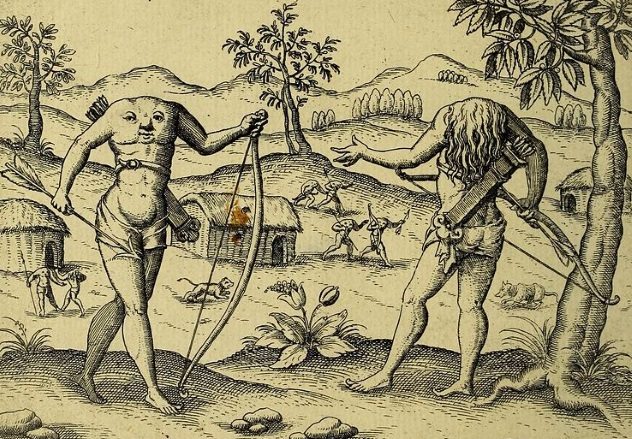
In the eastern part of Libya, in the fifth century BC, there was a tribe of men with no heads upon their shoulders. Instead, they had their eyes and their mouths on their chests.
At least, that’s what the Greek writer Herodotus claimed. Admittedly, he wasn’t going off the best information—he was only repeating, as he noted, what “the Libyans say,” but he isn’t the only person who has claimed they exist. In fact, people have been reporting sightings for more than 2,000 years.
More than 400 years later, Roman writer Pliny the Elder insisted they were real. He named them the Belmmyae and said that they were a nomadic tribe that had since moved to Ethiopia. They were also total savages, he reported, and extremely dangerous.
They kept coming. In AD 1211, an explorer named Fermes claimed he’d found a tribe of “men without heads, who have their eyes and mouth on their chests” living on an island in Ethiopia, adding that they were 366 centimeters (12′) tall. And a little over 100 years later, John Mandeville claimed to have seen them, too.[1] In the 17th century, Sir Walter Raleigh himself insisted they were real.
9 The Calystrii: The Dog-Headed Men Of India

A Greek physician named Ctesias traveled out to India back in the fifth century BC, and he came back with some crazy stories. Up in the mountains, he claimed, there was tribe called the Calystrii—and they had the heads of dogs.
“They speak no language, but bark like dogs,” Ctesias reported.[2] They could understand the other people of India, he claimed, but had to reply by barking or using sign language. And there was no small number of them. By Ctesais’s best guess, there were 120,000 Calystrii living in the mountains of India.
The really weird part, though, is that people actually backed up his story. About 200 years later, a man named Megasthenes followed Ctesias’s path into India and reported back that the Calystrii were real. He had seen them himself, he insisted.
And it wasn’t just the Greeks. Indian and Tang dynasty Chinese writers claimed the dog-headed men were near Tibet and were called the Supana. And centuries later, Marco Polo claimed to have met a tribe of people who looked just like the Calystrii on an island called Angamanain. “I assure you,” Marco Polo wrote, “all the men of this Island of Angamanain have heads like dogs.”
8 The Sciopodes: The Umbrella-Footed Men
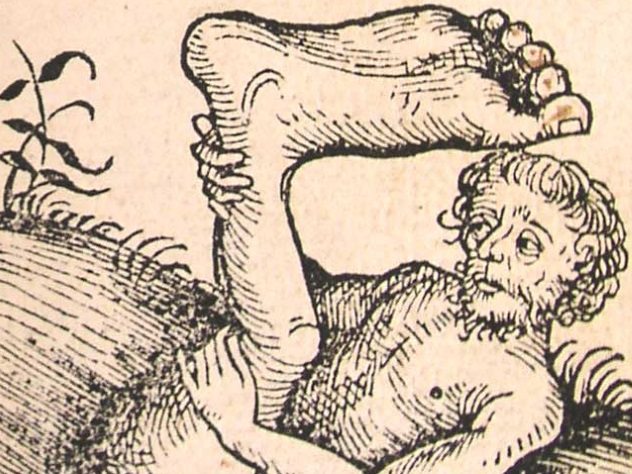
Ctesias didn’t just see dog-headed men in India, though. He also claimed to have met a group of extremely strange-looking people called the Sciopodes. The people of this tribe, he claimed, had only one leg with one gigantic foot. And, when it got hot, they would lie on their backs and use their gigantic feet as umbrellas.
The Sciopodes, according to Ctesias, got around by hopping—and they could do it extraordinarily well. They could leap over a man’s head, all by bounding on one foot.
It’s all fairly ridiculous, but people believed Sciopodes were real for another 2,000 years. Isidore of Seville insisted they really existed and worked them into his bestiaries; early maps had little pictures of them drawn inside of India, to show where they lived; and even the philosopher St. Augustine wrote a whole treatise about them.[3] The Sciopodes, St. Augustine wrote, had to be descended from Adam and ought to be considered human.
7 The Panotti: The Men Of All-Ears Island
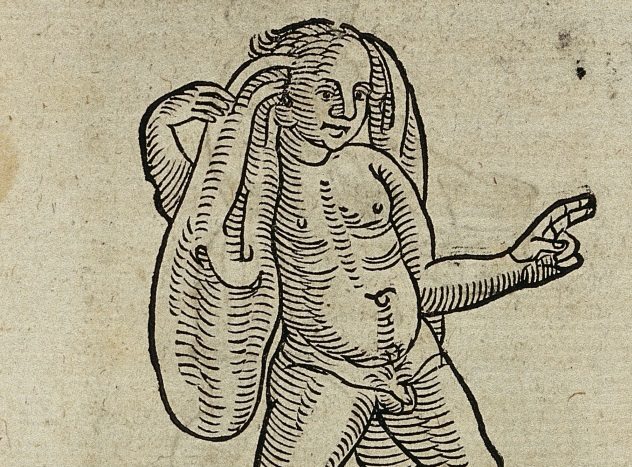
On an island in Scythia, according to the Roman naturalist Pliny the Elder, lived a group of people called the Panotti.[4] These people had massive, floppy ears hanging off the sides of their heads. Their ears were so big that they didn’t even need clothes. They could just wrap their ears around their bodies during the day and even use them as blankets at night.
It’s kind of a silly mental image—but one of his contemporaries, a Roman named Pomponius Mela, insisted that Pliny was telling the truth. He just had the wrong location. According to Mela, the Panotti were on the Orkney Islands in modern-day Scotland. And not only did they use their ears as clothes, but they could prop them up as parasols on sunny days.
According to Mela, the Panotti didn’t live alone. They had to share their island with another tribe: the Hippopodes, a group of people who had horse hooves for feet.
6 Fusang: The Kingdom Of Women

Europeans weren’t the only people who were convinced that weird-looking tribes were all around them. When a Chinese missionary named Hui-Shen sailed to see what was to the east of China in AD 500, he came back with some crazy stories.[5]
Hui-Shen claimed that he’d reached a place called Fusang, which, based on his direction, would be in the area of modern San Francisco. (Others have variously nominated Mexico, British Columbia, and other places.) Inside Fusang, he claims that he found a kingdom of women who reproduce asexually.
The women, he said, were beautiful, although their bodies were covered with hair. There were no men among them, Hui-Shen claimed. Instead, the women would reproduce by walking into the water and waiting until a child formed in their wombs. Then, three or four months later, their babies would be born. They’d feed their babies, he claimed, by letting them suckle juice out of their neck hairs.
It’s a very strange story, but an Indian astronomer named Varahamihira claimed that he’d met these women, too. Varahamihira, however, seems to suggest that Hui-Shen took a wrong turn on his way to San Francisco. Varahamihira put the women in Tibet—right next to the dog-headed Calystrii.
5 The Arimaspoi: The One-Eyed Mountain Men
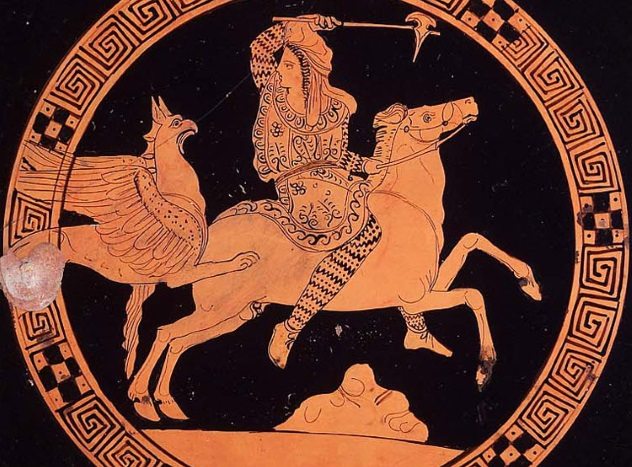
In the northern regions of Scythia, in a range of snow-capped mountains called the Riphean Mountains, lived a tribe of one-eyed people called the Arimaspoi. According to the ancient Greeks, these one-eyed people weren’t just an oddity—they were the main reason Scythia was so wealthy.
The Arimaspoi, Herodotus claimed, made their living by stealing gold from griffins. They lived near a group of greedy griffins who would pass their time sitting of piles of gold, and the Arimaspoi were the only people brave enough to steal their wealth and take it back to Scythia.
There’s a lot of crazy in that story. In fact, even Herodotus scribbled in a little disclaimer saying that he was just repeating what a Scythian had told him. Oddly enough, though, there are actually some modern historians who think the Arimaspoi might have been real.[6]
The theory is that the whole story just comes from a language barrier and a game of broken telephone. There was a group of Zoroastrian followers that went by a name that sounded an awful lot like “Arimaspoi”—which means “one-eyed.” Herodotus, some historians think, may just have misheard their name and run with it.
4 The Abarimon: The Tribe With Backward Feet
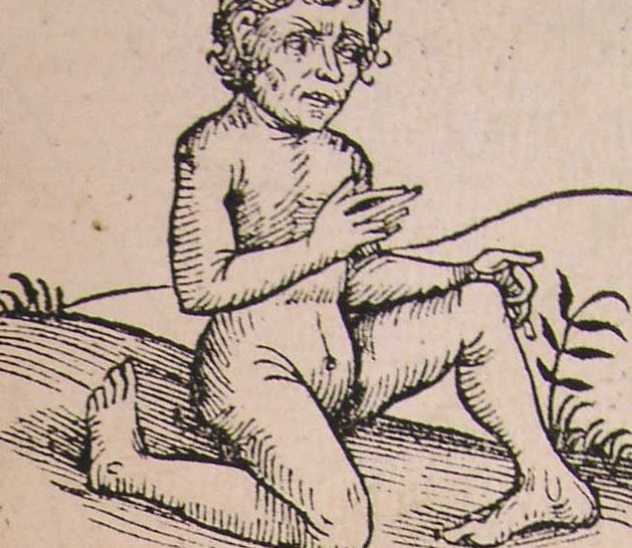
When Alexander the Great marched east, he hired a man named Baiton to scout ahead and see what was inside India. If Baiton is to be believed, he made it all the way to the Himalayas: the land where the Abarimon live.
The Abarimon, Baiton said, had their feet on the wrong way.[7] Their feet pointed backward, which, surprisingly, didn’t seem to be much of a handicap. He claimed that they could run quickly enough to keep up with the fastest wild animals.
He would have brought one back to Greece, Baiton said, but the Abarimon had lungs that would only work in their own climate. When he tried to bring them out, they began to choke on the thick air of the world below.
Sure, that’s a pretty convenient excuse—but Baiton wasn’t the only one who saw them. Megasthenes claimed to have seen them, too, when he traveled through India. He says that they preferred to be called the Nulus, however, and added that they had eight toes on each foot.
3 The Makhlyes: The Tribe Of Hermaphrodites
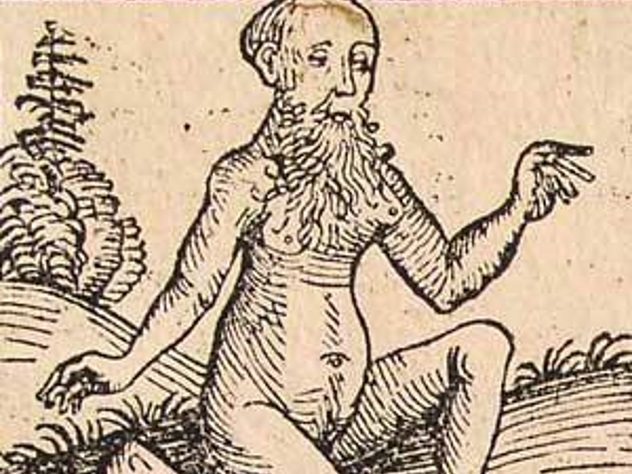
In Ethiopia, there was a nation called Makylhes. And, according to the Greeks and the Romans, every single person in their whole country was a hermaphrodite.
That’s definitely what the Romans said, anyway. The Greeks were the first people to make contact with Makylhes, and while they treated the women as fairly butch, they didn’t specifically call them hermaphrodites. When Herodotus wrote about them, he said that they worshiped a female god of war and celebrated her by having the women fight with stones and sticks.
He didn’t exactly mention their genitals, but Aristotle would later claim that the people there had one female breast on the right side of their body. And the Roman writer Calliphanes would later claim that they were fully hermaphroditic.[8]
If Calliphanes is to be believed, both organs worked for these people. As he put it, the Makylhes “unite the two sexes in the same individual, and alternately perform the functions of each.”
2 The Astomoi: The Indian Tribe That Eats Odors

Of all the strange people Megasthenes, that Greek explorer who traveled into India, claimed to have met, the oddest has to be the Astomoi. They were a tribe of incredibly hairy men who dressed in cottonwool—and they didn’t have mouths.
The Astomoi got their food, Megasthenes claimed, by smelling things. They would carry smelly roots and flowers around with them and would inhale them for nourishment. They had to be careful, though; they were extremely susceptible to scents. A strong and powerful enough odor could kill one on the spot.
Medieval explorers claimed to have met the Astomoi, too, and specifically said that they lived in the upper reaches of the Ganges. John Mandeville talked about them the most, although he added a lot of details that Megasthenes left out.[9]
The Astomoi, according to Mandeville, were a pygmy tribe, and their faces weren’t entirely blank. That had a little round hole in the middle that they could use to drink, usually through a straw. Since they didn’t have mouths, they had to speak through hissing.
1 The Libyan Satyrs: The Goat Men Of Africa
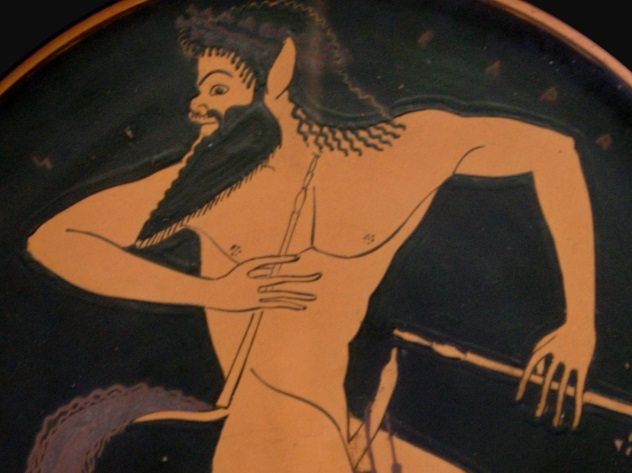
Satyrs—according to a lot of Roman and Greek writers—weren’t just creatures from mythology. They were real. In fact, a whole lot of people have claimed to have seen them firsthand.[10]
The Greek writers Herodotus and Xenophon both claimed to have seen a satyr’s hide. It was a tourist attraction, they said, that was on display in a town by the Meander River.
And they weren’t the only ones. Pliny the Elder worked a casual, offhand command into his writings saying that a number of satyrs lived in Western Ethiopia. And several Romans claimed that they’d seen ones put on display.
Pausanias claimed that a Libyan satyr was captured and brought to Rome, while Plutarch claimed he’d seen a satyr that was captured from a part of modern Albania. One Roman soldier, Sulla, even claimed that he had personally caught a satyr by surprising it while it was sleeping.
And it didn’t even stop there. By the fourth century AD, it was believed that the last satyrs had died—but their bodies were still on display. Saint Jerome, in fact, claimed that he’d seen the body of a satyr himself, preserved in a pile of salt.
Read about more life-forms that past scholars alleged to exist on 10 Fantastic Creatures From Medieval Bestiaries and 10 Logical Explanations For Beings Of Folklore.








